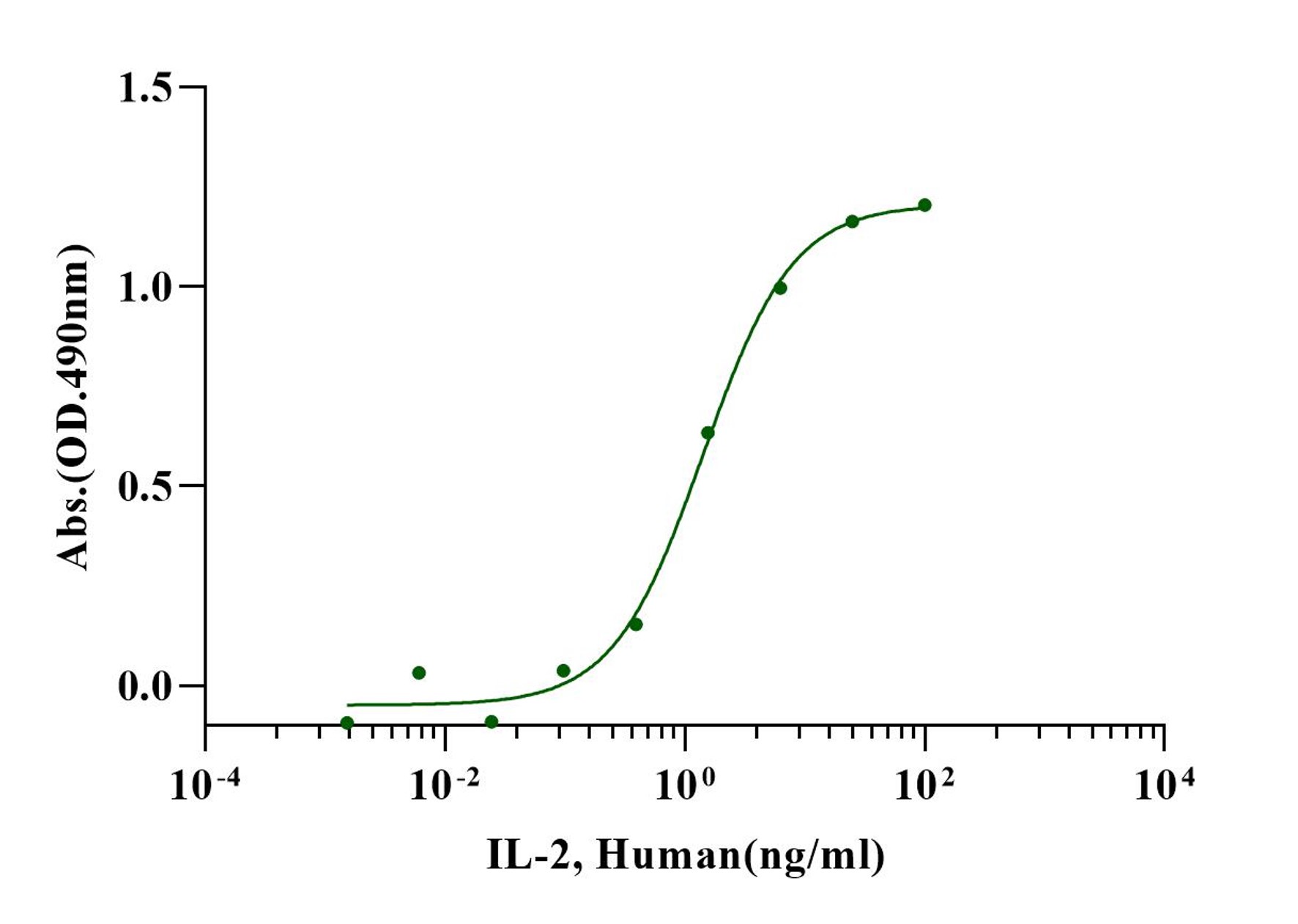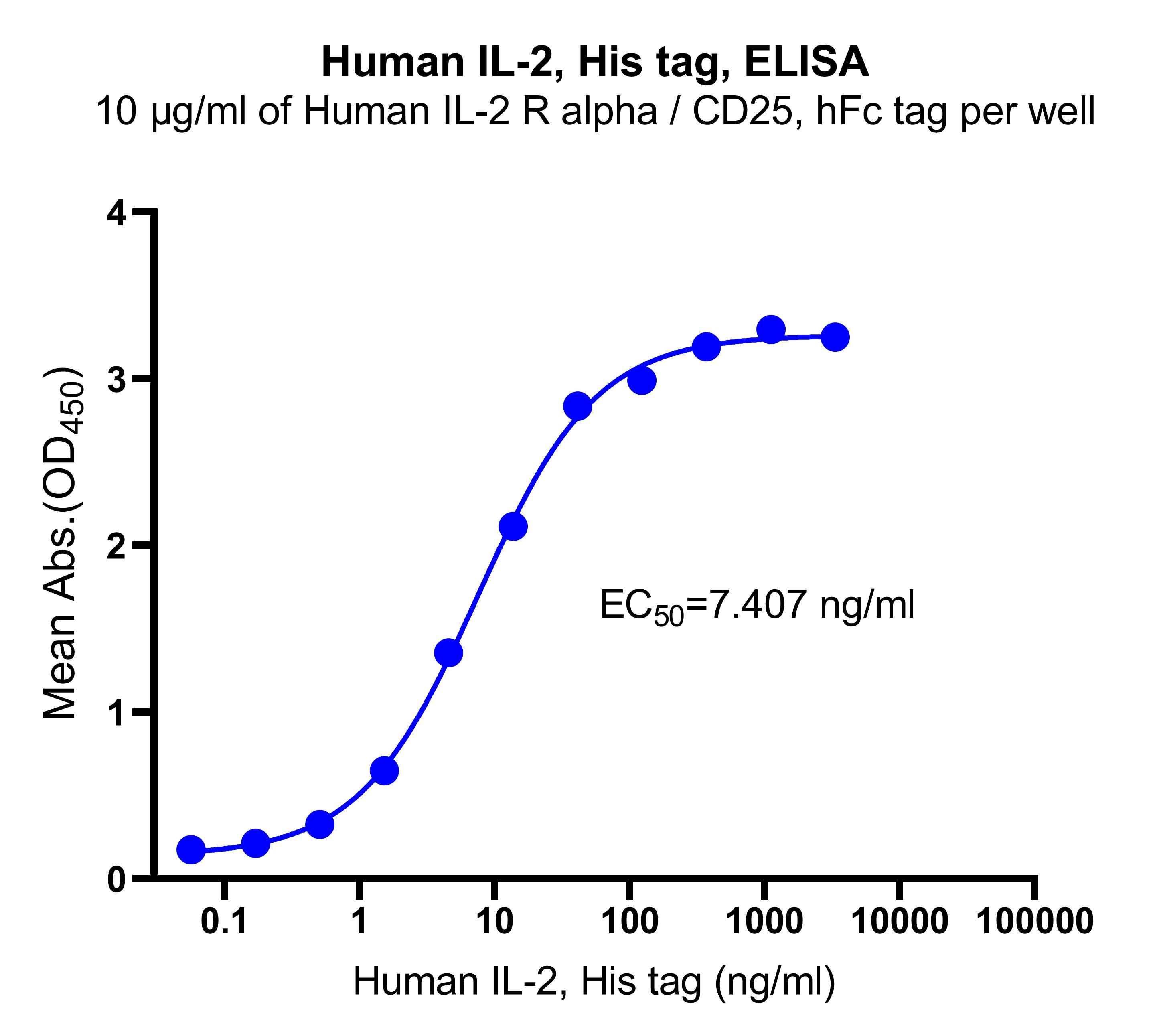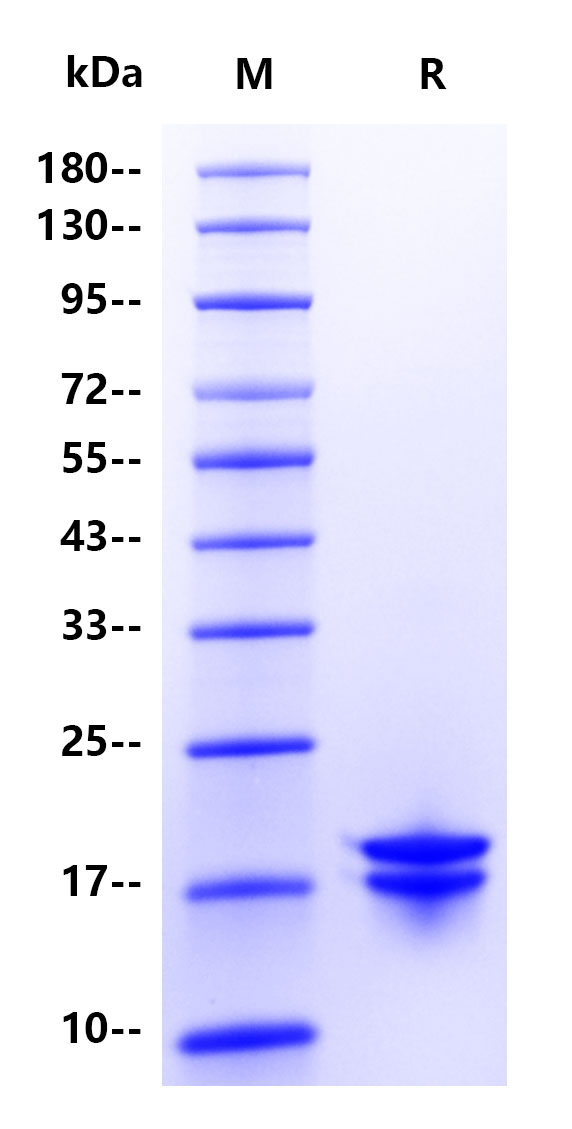Protein sequence(P60568, Ala21-Thr153 with C-10*His)
APTSSSTKKTQLQLEHLLLDLQMILNGINNYKNPKLTRMLTFKFYMPKKATELKHLQCLEEELKPLEEVLNLAQSKNFHLRPRDLISNINVIVLELKGSETTFMCEYADETATIVEFLNRWITFCQSIISTLTGGGGSHHHHHHHHHH
>95% by SDS-PAGE
12 months from date of receipt, -20 ℃ to -70 °C as supplied.
1 month, 2 to 8 °C under sterile conditions after reconstitution.
Please avoid repeated freeze-thaw cycles.
Interleukin-2 (IL-2) is an interleukin, a type of cytokine signaling molecule in the immune system. It regulates the activities of white blood cells (leukocytes, often lymphocytes) that are responsible for immunity. IL-2 is part of the body's natural response to microbial infection, and in discriminating between foreign ("non-self") and "self". IL-2 mediates its effects by binding to IL-2 receptors, which are expressed by lymphocytes. The major sources of IL-2 are activated CD4+ T cells and activated CD8+ T cells.IL-2 has essential roles in key functions of the immune system, tolerance and immunity, primarily via its direct effects on T cells. In the thymus, where T cells mature, it prevents autoimmune diseases by promoting the differentiation of certain immature T cells into regulatory T cells, which suppress other T cells that are otherwise primed to attack normal healthy cells in the body.

Biological activity was measured in a cell proliferation assay using CTLL-2 cells. EC50<2.0ng/ml

Immobilized Human IL-2R alpha/CD25, hFc tag at 10 μg/mL (50 μL/well) can bind Human IL-2, His tag with EC50 of 6.418-8.526 ng/ ml.
